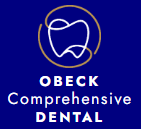To all of those who read this newsletter, thank you. I hope you find this monthly newsletter educational and interesting; perhaps it may even answer some questions about oral health that you may have been pondering. If you have any dental questions or topics you would like me to write about, please let me know!
This month I am presenting a two-part guide that helps patients understand the various factors that cause tooth grinding (aka “bruxism”) and how this impacts the teeth, muscles, and jaw joint. In part one, I broke down the main reasons people clench their jaws and grind their teeth. In part two, I will now discuss strategies to help patients manage bruxism and prevent unnecessary damage to the teeth and temporomandibular joint (“TMJ”). It is important to note that bruxism is an involuntary neuromuscular activity that typically cannot be completely “cured”; so patients must diligently focus on managing their bruxism and minimizing the risks associated with bruxing.
Nightguards: Patients who brux their teeth often do so at night without realizing it. They may wake up with headaches, tightness in their jaw, and sore teeth, jaw joints, and jaw muscles. At our practice we make two different types of night guards depending on the presence of temporomandibular joint (“TMJ”) symptoms. The first style of nightguard is for patients without TMJ symptoms only allows patients to contact the nightguard with their two front teeth. These small nightguards “trick” our brains in our sleep by deprogramming the jaw muscles into using less of their biteforce. These nightguards protect the teeth and relieve muscle soreness and tightness; I wear one every night. The second style of nightguard is for patients with TMJ symptoms and cover every tooth. These nightguards provide ideal, balanced contacts for all teeth and ease jaw joint pain and protect the teeth wear and attrition. It is important to note that “soft” nightguards should be avoided because they actually cause patients to clench and chew on them in their sleep, much like a chew toy for a dog. This usually exacerbates muscle soreness and TMJ symptoms.
Botox Injections: A new and exciting treatment for bruxism involves injecting the masseter and temporalis muscles with Botox to relax the muscles. While many associate Botox with its cosmetic applications, this is a non-cosmetic intramuscular treatment for therapeutic use. Although Botox is not permanent, it greatly reduces the amount of bite force that patients are able to exert while bruxing. This treatment is a great option for chronic bruxism patients who also clench during the day and often break their teeth or dental restorations.
“Lips together, teeth apart”: Many patients are surprised to hear that our upper and lower teeth should not be touching each other throughout the day. Our teeth should only contact each other lightly when swallowing or chewing our food. Some people clamp their teeth together without grinding them during the day and at night. If you find that you constantly touch your teeth together throughout the day, always remember the phrase “Lips together, teeth apart, tongue up to the roof of your mouth” and try to break the habit. You may be able to reduce muscle soreness and clenching during the day with this constant reminder. Unfortunately, this phrase has conscious limitations and cannot stop involuntary bruxism that could be related to medications, stress, or sleep disordered breathing.
Stopping Parafunctional Habits: Some patients do not brux their teeth but rather have “parafunctional habits”. Parafunctional habits are abnormal behaviors that can chip or split teeth. Sometimes parafunctional habits can cause irreparable damage and tooth loss. Some common examples include nail biting, chewing pencils, biting fishing line, opening containers with teeth, or holding objects with teeth. Teeth are not tools. If you have parafunctional habits, try to consciously remind yourself of the risks that these behaviors pose to your dental health and stop them.
Hopefully, this guide serves you well as an educational primer to understand the various treatments for bruxism. Bruxism cannot be truly “cured”; but it can be successfully managed and treated with cooperative efforts from both the patient and the treating dentist. If you have any questions or concerns about bruxism or other oral health topics, please do not hesitate to reach out to Dr. Krist or me.
Sincerely,
Dr. John Obeck
